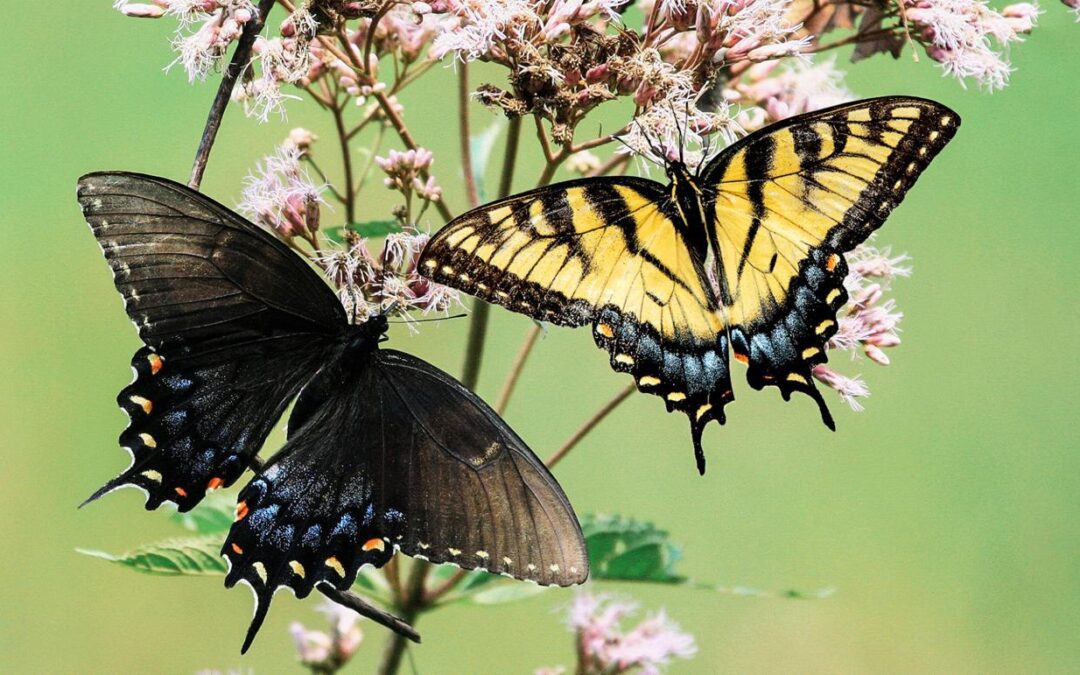Learn About Butterflies Day was last week It always reminds us that the battle between strength and fragility is not better illustrated more clearly than by a butterfly. About 130 of these brightly colored beauties can be spotted during the spring and summer in Wisconsin and are a welcome visitor to home landscapes. But gardeners value butterflies for their usefulness as pollinators, as well as for their beauty. You can attract them to your yard by planting shrubs and perennials that serve the needs of all life stages of the butterfly, providing places to lay eggs, food plants for the caterpillars and the adults, and spots to form chrysalides.
Butterfly gardens can be any size, from a small window box to a large border in your landscape. They can be as simple as you’d like, from a massed drift of coneflowers to a constantly blooming bed of host plants and nectar-rich perennials. And once you’ve created your pollinator garden, it can be certified with the National Wildlife Federation. For more information check out https://www.nwf.org/Home/Garden-for-Wildlife/Create
The Million Pollinator Gardens Project was a nationwide call to action to preserve and create gardens and landscapes that help ensure the health of bees, butterflies and other pollinators across America. Non-profits like Wild Ones and America in Bloom partnered with local garden clubs to get folks outdoors, educating them on the connection between healthy landscapes and the food that we eat. Even though the goal of registering a million gardens was reached in 2019, but we are firmly in the more, the merrier camp! We gardeners don’t need accolades in order to do our best to make a difference. Scientists who study both urban and suburban pollinator gardens found measurable benefits to pollinator counts and health. And because 35% of the world’s food crops depend on pollinators to produce, pollinator health has a direct correlation to our health.
You can get a jump on planning for this year by learning about the different roles that plants play in attracting butterflies, moths and other pollinating insects. We’ll begin by defining a host plant. These plants, usually native to an area, are those that the adult butterflies lay eggs on and they are often butterfly-specific. Having host plants in your garden ensures that the butterflies will linger for longer periods of time. And the caterpillars will stay, too, because those once those eggs hatch, they will be munching. Don’t be too worried about it though. The symbiotic relationships between host plants and their guests have evolved to withstand feeding and other activities. A few of the most common host perennials for Dane County gardens are red milkweed for monarchs and native asters to attract and feed pearl crescents and painted ladies. And I always include some of an annual herb, bronze fennel, as it’s an absolute magnet for swallowtails.
Next, be sure to supply plenty of nectar-rich, flowering plants to provide food for the adults. Butterflies are attracted to flowers by color, so plant masses of single colors, rather than complicated mixes. And, try to provide a continuous bloom through the growing season. Butterflies are common in our area from mid-spring to late fall, but are most active from early summer to early autumn. There are many choices, but a few of our favorites are native asters, coneflowers and blazing-stars, garden phlox and butterflybush.
Finally, try to use some critical thinking when it comes to insecticides. Most are not insect specific and will kill a broad spectrum of creatures, including the useful ones like bees, butterflies and ladybugs. So don’t apply insecticides in or near your butterfly attracting plants.
You’ll also want to provide some shallow watering spots in sheltered areas. These can be as simple as a clay sauce filled with watered sand. This will provide moisture as well as protection from weather and predators. And once you’re hooked and find yourself wanting to attract a few of the less commonly found species, check out https://wisconsinbutterflies.org/butterfly to see some of the rarer possibilities.


